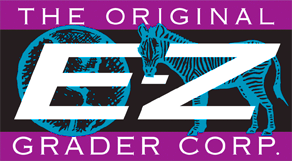Formative Assessment and Technology:
A Perfect Pair
The previous blog featured a great discussion about Formative and Summative Assessments. While these certainly are a common pair of phrases in education today, it’s usually not long before the term “data” enters the conversation as well. The key to formative assessment is that “informs instruction”. That means that the teacher’s instruction is directly impacted by the results of the formative assessment and tailored to the needs of each student.
On the teacher side of things, that means the formative assessment must happen in a way such that results are immediate and clear to allow for adjustments to individual or groups of students based on the data. It’s fairly simple to do with assessments such as Fist to Five, Thumbs Up, Down or In The Middle, and placing sticky notes along a continuum. However, if you want to check specific content, it can be tricky. After all, you cannot have a long turn-around time between the assessment and the results impacting the instruction. That’s where technology can help.
This month our topic is how to integrate technology to help administer the assessments as well as to provide the teacher with data that is helpful in adjusting instruction to meet the needs of the students in an efficient (and fun!) manner. The tools I will be discussing are free. Some have paid upgrades available which have additional features.
Topic Feature: Technology Assessment Tools
Socrative:
At beta.socrative.com, teachers can create a free account that allows them to make assessments that contain multiple-choice, true / false, and free-response questions. Students can take these assessments in a variety of formats (teacher-lead, student-lead, game mode) depending on the settings the teacher has selected. All students have to do is go to the website (or open the app which is available on Android , iOS and Kindle format) and enter the teacher’s “room number” which is originally a random number but can be customized by the teacher in the settings area. The program will prompt them to type their first and last name and then begin answering the questions. Teachers have many settings to select from including how students receive feedback. On his screen, the teacher can see live results as they are happening. Results are color-coded red and green. When all students have completed the assessment the teacher can have the results emailed in spreadsheet form showing all the students’ results including every single response. Pro for younger students: no login needed. Con for teachers: only one quiz can run at a time.
Exit Ticket:
Teachers can sign up for this tool at www.exittix.com. As with the previous tool, in Exit Ticket, teachers can create assessments with multiple question formats. In Exit Ticket, the students will go online (or use the app) and create a free account. Then they enter the teacher’s class code to be linked to their class. One really nice feature is that teachers can set a day (or range of days) when the specific assessments are available. In addition, several assessments can be running at the same time (nice for middle and high school teachers who have multiple courses or sections or elementary teachers who want to have multiple subjects running at the same time). Teachers also see live results in Exit Ticket and can export those results to a spreadsheet. Again, the results are color-coded. One thing I find nice about Exit Ticket is the longitudinal data that is shown to students. By that, I mean they see how they did last week, yesterday, today, etc. They can actually see their own growth. My middle school students find that particularly motivating.
Pro: students found it more visually appealing and longitudinal data is available to students and teacher. Con: students need to login – could be problematic for younger kids.
Kahoot! :
Even the name sounds fun, right? Your students will have a blast with Kahoot! Teachers create a free account at www.getkahoot.com. There you can create your multiple-choice questions. The activity is run between the classroom computer / projector and the students’ computers or devices. When the teacher runs the activity, students will access the website kahoot.it (or app) and use the game-PIN to enter. They are prompted for their names (which will be displayed). Kahoot! is designed to show an image during the question, though it’s not required. If teachers choose not to use one, it will show the Kahoot! logo. The question is displayed on the screen, and the students answer on their devices using the color / shape-coded answer blocks. Points are awarded for correctness and speed. However, wrong is wrong and receives no points. If you want the silent testing atmosphere, this is not your tool. This has a competitive game feel, and the kids will be cheering and hooting as the game goes. The top five point holders are displayed after each round and a final winner is announced at the end. It’s great fun. Feel free to try it at a faculty meeting as well. A recent update allows teachers to now export that assessment data of student names and all their answers in a spreadsheet that is, again, color-coded red and green. Pro: it’s FUN! Con: sometimes students answer too quickly in an effort to get more points.
Though each tool is slightly different, they are all very useful. I have used all of them in my classes (grades 6-8) this year. There are 3 keys to these working for you as well. First, practice with them before you try them in class. Second, be sure that you are using the data you get from them to directly inform your instruction. It’s easy to identify the students or content needing remediation. Finally, as always, take your time implementing a new technology tool. Don’t try to over-do it.
Jennifer S. – Ohio Teacher – Grades 6-8
